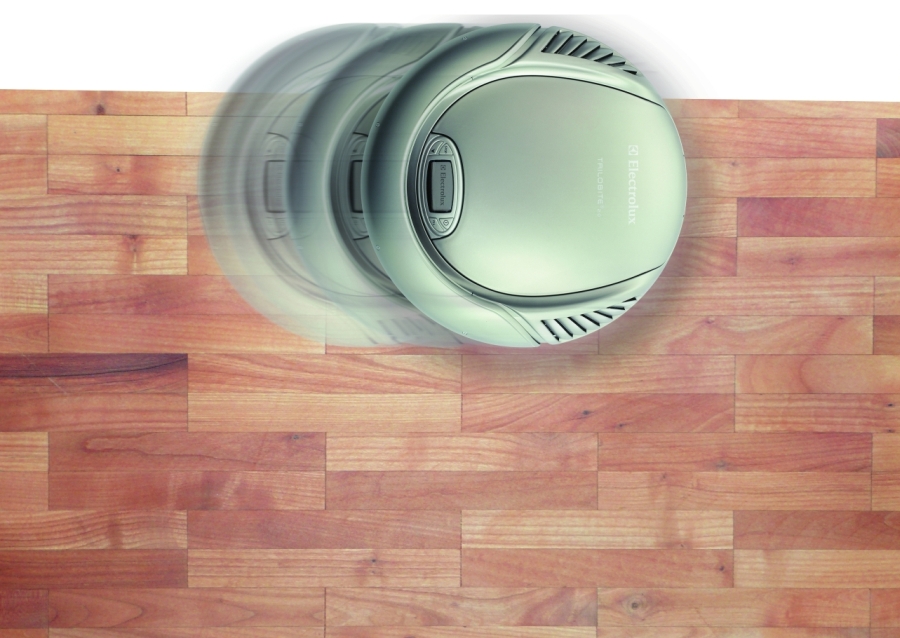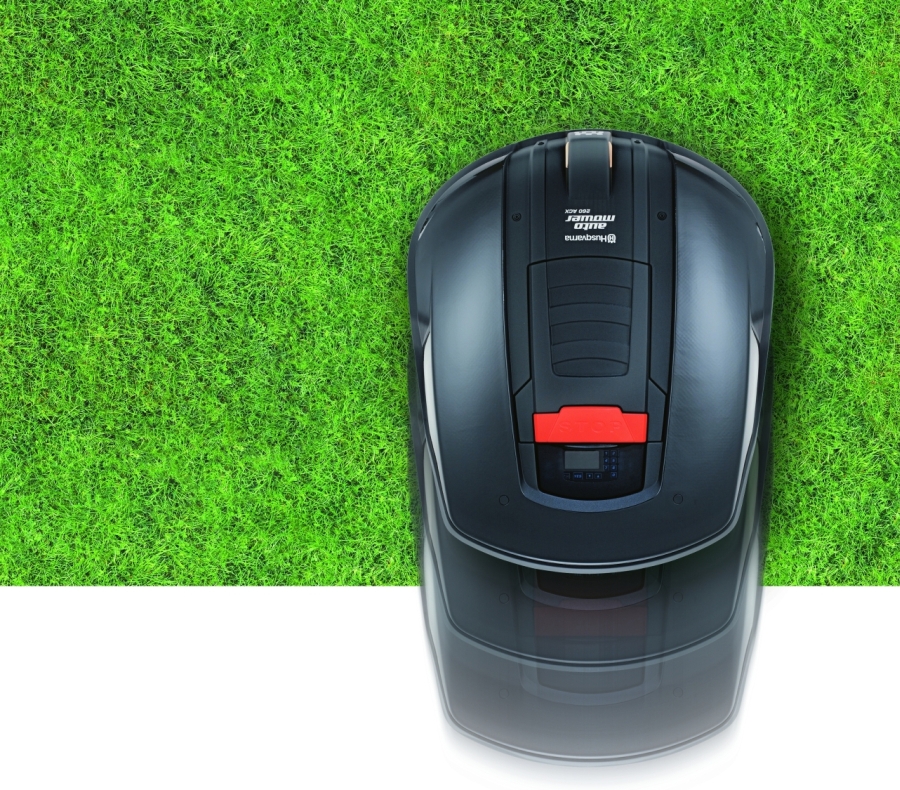Vacuum cleaning? Lawn mowing? Nowadays, that is done by robots: automatically, quietly, reliably and without grumbling
Look who’s mowing the lawn, ask the neighbours as the Automower® glides across the lawn, as if by magic. The blades of grass are cut to size all over, apparently without any recognisable pattern. At the same time, a flat, prehistoric-looking creature is crawling over the parquet and carpets. The Trilobite leaves nothing but a dust-free floor behind as it makes its way through the apartment. Household robots are playing an ever greater role in relieving us of our chores in house and garden. This is made possible by EC technology.
High performance in a small space
An extinct arthropod from prehistoric times inspired Electrolux to develop the world’s first fully automatic vacuum cleaner, the Trilobite, at the turn of the millennium. Flat and as nimble as its prehistoric namesake, the robotic vacuum cleaner glides over the floor without colliding with anything. The fact that the floor is then sparklingly clean is made possible in part by ebm-papst.
Electrolux developed the blower sections itself. Then the Swedish household appliance specialists needed a motor to match, a motor that could satisfy the rigorous demands on the aspirator, and which was also cost-effective. “The limited space meant that the required air performance could only be achieved by using a high speed,” explains Achim Labitzke, Product Manager at ebm-papst in St. Georgen. However, for reasons of cost, only a single-phase Variodrive motor was possible. This is usually employed in compact fans with a power draw of ten watts. Now it should draw 55 watts at 18 volts to generate a speed of up to 18,000 rpm. “We reconciled the cost aspect and the power requirement by optimising the motor output and developed a powerful suction drive,” explains Labitzke.
Optimised efficiency is essential for good battery performance. After all, the suction drive uses two thirds of the Trilobite’s energy. The single-phase EC motor achieves an efficiency of 75 percent despite the high speed. This creates an overall efficiency of 45 percent for the blower. That is some 10 percentage points more than a mains-powered vacuum cleaner. And despite this extreme mechanical load, the blower motor has a service life of more than 2,000 hours.
Moreover, the EC motor is by its very nature quiet. To enable the complete blower to have a maximum noise level of 75 decibels, additional acoustic optimisations were performed in St. Georgen. Now, the fully automatic vacuum cleaner buzzes through the apartment without disturbing anybody talking on the phone or watching TV.
The pioneer of robotic vacuum cleaners. The Trilobite works out the most efficient way of cleaning a room. It uses ultrasonic waves to detect and circumvent obstacles. If used regularly, it will reduce manual vacuuming to about once a month.
On a knife’s edge
The automatic lawnmower from Husqvarna sneaks past its hand-propelled compatriots with a working volume of well under 64 decibels. But that is not the only thing the robotic vacuum cleaner has in common with the Automower®. Above all the cutter drive, which is supplied by ebm-papst Landshut, represents a prime example of a product that has been optimised with respect to cost and performance. “At first we were not sure whether the requirements for the new motor were maybe a bit too much,” admits Siegbert Hartauer from the lower Bavarian sales organisation, describing the early misgivings. After all, Husqvarna was counting on continuing its success story.
Since 1994, the Swedes have been using a single-core, brushless direct current motor from Landshut to turn the cutter blades in the four Automower models 210 C, 220 AC and 230 ACX and solar Hybrid. Husqvarna employs a mechanical trick to overcome the weak start-up torque, which is the drawback of the low priced single-core motor. The razor-sharp blades are not fixed to the rotating disk. Rather, they fold out once the working speed has been reached.
The 260 ACX was launched at the beginning of 2009. The largest model of the automatic mowers is designed for semi-professional use and has a mowing range of around 6,000 square metres, so it needs a more powerful motor. Until now, the BG 3633 has been used as a fan drive in heater blowers, with a service life of up to 20,000 hours. Yet the 50 watts power output required by Husqvarna still caused the motor to overheat. Until the engineers at Landshut found the solution. A modified cooling blade now expels even more heat, allowing the motor to defy the greater power. Its ideal operating point is at 1,750 rpm with a power output of more than 45 watts – and an efficiency of 63 percent. This energy efficiency allows the Automower® to cut a lot of grass before it needs to return to the charging station. And there is another characteristic that links it to its vacuum cleaning compatriot. You don’t have to persuade it to work, and it doesn’t demand any praise afterwards.
Within a limitation cable laid out along the borders, the Automower® automatically carves its way over the lawn. Day or night, sun or rain, even on gradients of up to 35 percent.



Leave a comment